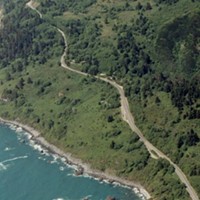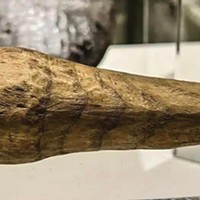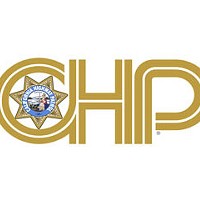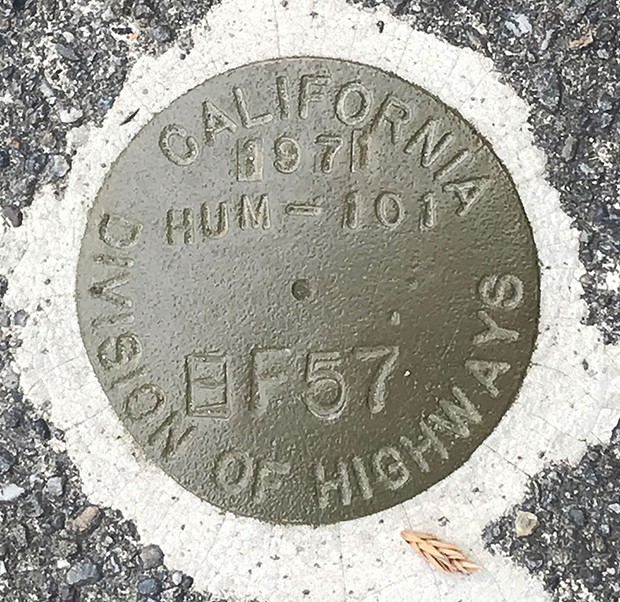[
{
"name": "Top Stories Video Pair",
"insertPoint": "7",
"component": "17087298",
"parentWrapperClass": "fdn-ads-inline-content-block",
"requiredCountToDisplay": "1"
}
]
Observant walkers strolling down Ninth Street in Eureka between A and L streets may have wondered about the occasional incongruent circular metal discs anchored into the south sidewalk bearing the words "CALIFORNIA DIVISION OF HIGHWAYS," "HUM-101" and the date 1971. Incongruent because Ninth is outside Caltrans jurisdiction. In fact, the discs are centerline markers of what would have been the realignment of U.S. Highway 101, taking off from what is now Bayshore Mall, staying south of Fourth and Fifth streets, and rejoining the present-day highway west of the Eureka Slough bridge. Had the plan gone ahead, drivers would be zipping through Eureka at 65 mph in the same way they now bypass downtown Arcata.
Rather than dwell on the what-ifs of Eureka's recent history, I'd like to discuss the discs themselves. Despite nearly 50 years of assault from the elements and being stepped on, they're as legible as ever. That's because they're made of bronze.
Not so long ago, metal survey markers were usually cast from brass, an alloy of copper and zinc. Invented around 500 B.C., brass is found ubiquitously in decorative and/or precision applications such as doorknobs and locks, watch gears, plumbing valves and musical instruments. When polished, it can look nearly as bright as gold. The problem — especially with outdoor applications — is that the zinc in brass is subject to dezincification, that is, corrosion.
Bronze, on the other hand, is much more corrosion resistant. The main constituent is copper, combined with various additives: tin (typically 12 percent, good for ship propellers and rudders, also for the finest bells and cymbals), phosphorous (guitar and piano strings), silicon (3 percent silicon bronze is probably what the markers on Ninth Street consist of) and many more, including manganese and aluminum. Such were its revolutionary properties when it was invented, around 3,500 B.C. in the Middle East, that an entire age is named for it. When the supply of bronze failed, probably because of disruptions to the tin trade routes, the Bronze Age Collapse of around 1,200 B.C. signaled a five-century-long dark age ("The Bronze Age," Oct. 5 and 12, 2017).
Another useful property: As tin bronze cools, just before setting, it expands slightly, filling in the finest details of the mold. That makes it the usual choice for cast metal sculptures and historical plaques, where exact reproduction of the template is essential.
While researching this column, I stumbled upon a lovely piece of trivia — incongruous, even. Some years ago, Olympic Games' winners were surveyed to see how they felt about their medals. The gold champions were — of course — pretty darn happy. But surprisingly (until you think about it), the silver medallists were significantly unhappier than the bronze winners. Why? Because they missed out on the gold. Meanwhile, the bronze athletes were just happy to have won any medal, instead of getting no medal for a fourth-place win. Dontcha love human nature?
Oh yes, those "gold" medals? Since 1920 they've been gilded or gold-plated silver. That makes them worth about $600 today for the gold and silver they contain, versus about $300 for a (nearly) solid silver medal and maybe $4 for a bronze. But that's not counting the value of subsequent endorsements, which, of course, is where the big bucks are to be found. So much for the good old days, back in ancient Greece, when those nude Greek dudes (gymnos = naked) competed every four years for crowns of laurel leaves.
Speaking of...
-

Caltrans Selects Tunnel Option for Last Chance Grade
Jun 18, 2024 -

A Brief History of Dildos
Apr 11, 2024 -

One Killed, Another Injured in 101 Crash
Apr 2, 2024 - More »
more from the author
-
The Myth of the Lone Genius
- Jun 6, 2024
-
mRNA Vaccines vs. the Pandemic
- May 23, 2024
-
Doubting Shakespeare, Part 3: Whodunnit?
- May 9, 2024
- More »

































